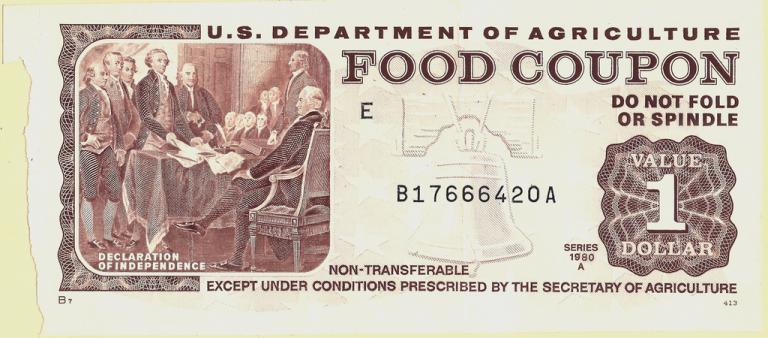
As reported in various sources, including Politico, the Trump administration in its latest budget has proposed reducing food stamp allocations and replacing them with packages of actual food, shelf-stable items including ” shelf-stable milk, peanut butter, canned fruits and meats, and cereal.” The plan would save money because the government could source these items at much less than retail, and would combat fraud, because users can’t sell cans of tuna in the same way as they can sell food stamps. (Yes, statistics say that food stamp fraud is minimal, but it seems to be more routine among the truly cashless poor, as profiled in the books $2 a Day and Evicted, who sell food stamps to get cash to meet their daily needs and rely on food banks, school meals, etc., afterwards.)
Done right, this could have some benefits. After all, one reads periodically that the poor are increasingly growing up in homes where the ability to cook has been lost, so a “Blue Apron”-type box with not just staples but recipes on how to put together meals, from the staples alone, or with the addition of fresh foods, would be a plus. And buying staples in bulk, then adding in the fresh items in other shopping trips, is a fairly common way of shopping.
But the largest failing of this proposal is that it imagines that all recipients would be able to pick up their boxes from some central location — there is no delivery envisioned. And given that one of the larger difficulties in grocery shopping that the carless poor face is getting back and forth from the store, I don’t see this system working without some provision for delivery.
And then there’s the greater quandary: one of the reasons why food stamps is perceived to “work” — that is, to provide food to people without disrupting the market or causing price-fixing issues — is that people are given benefits to spend in the open market. Yes, that has undesirable consequences, when people don’t spend the money the way we’d like them to, but there’s no particularly good way to avoid that.
On the (third?) hand, well, the system is a mess in some ways. The working poor get a partial food stamp allocation because it, in principle, is supposed to just supplement their own food purchases, but when their other expenses outstrip their income, they try to make the food stamp benefit cover their whole food costs. The unemployed single mother, on the other hand, can end up with a “sellable” surplus of food stamps because the amounts don’t distinguish between kids (who besides having smaller appetites also get meals at school) and adults. In many ways, cash benefits would make more sense, but there’s too much worry that parents would let their kids go hungry while they spend the money on booze, to implement this.
So, as usual: readers, what do you think?
Image: from https://www.flickr.com/photos/chrstphre/5489717927










